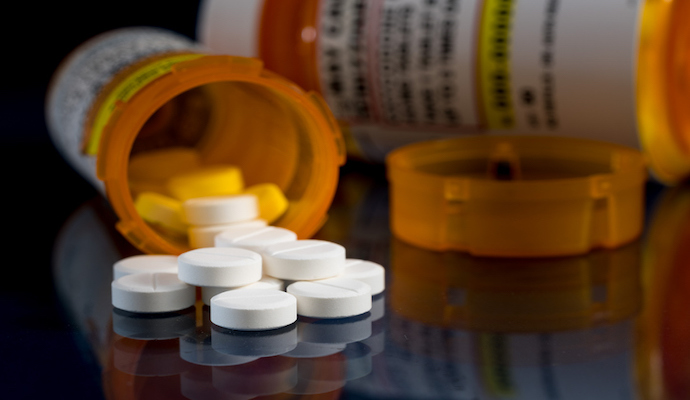FDA Requires Drug Manufacturers to Update Opioid Labels
Labels for opioid and OUD medicines will need to discuss the availability of naloxone, a drug used to reduce opioid overdose deaths, the FDA announced.

Source: Thinkstock
- FDA recently announced that it is requiring label changes for opioid pain medicines and medicines used to treat opioid use disorder (OUD).
Updated labels for the prescription drugs will need to say, that as part of prescribing these medicines, healthcare professionals should discuss the availability of naloxone with patients and caregivers when beginning or renewing treatment.
Naloxone is a medicine that can be given to individuals to help reduce opioid overdose deaths, usually within minutes.
“Even during this global pandemic, we have continued to prioritize addressing the opioid crisis. Today’s action can help further raise awareness about this potentially life-saving treatment for individuals that may be at greater risk of an overdose and those in the community most likely to observe an overdose,” said FDA Commissioner Stephen M. Hahn, MD.
“We will use all available tools to address this crisis, and we know efforts to increase access to naloxone have the potential to put an important medicine for combatting opioid overdose and death in the hands of those who need it most – those at increased risk of opioid overdose and their friends and family.”
FDA also noted that healthcare professionals should consider prescribing naloxone when they prescribe medicines to treat OUD, or to patients being prescribed opioid pain medicines that are increased risk of opioid overdose.
This includes patients that are taking benzodiazepines or other medicines that slow down the central nervous system, those who have a history of OUD, and those who have overdosed previously, FDA stated.
FDA required that these recommendations be added to the prescribing information for opioid pain medicines and medicines to treat OUD, such as buprenorphine, methadone, and naltrexone.
Every day, 128 people in the US die from overdosing on opioids, according to data from the National Institute of Drug Abuse (NIH).
Although the opioid crisis continues to be a challenge in the US, access to OUD care is not as accessible as it should be, according to industry experts.
Last year, FDA identified harm reported from sudden discontinuation of opioid pain medicines and required label changes to guide prescribers.
This harm included serious withdrawal symptoms, uncontrolled pain, psychological distress, and suicide.
“While we continue to track this safety concern as part of our ongoing monitoring of risks associated with opioid pain medicines, we are requiring changes to the prescribing information for these medicines that are intended for use in the outpatient setting,” FDA stated in the announcement.
“These changes will provide expanded guidance to health care professionals on how to safely decrease the dose in patients who are physically dependent on opioid pain medicines when the dose is to be decreased or the medicine is to be discontinued.”
Harm from discontinuation can force patients to treat pain or withdrawal symptoms with illicit opioids, including heroin and other substances.
In the label change, FDA required healthcare professionals to not abruptly discontinue opioids in a patient who is physically dependent, and to create a patient-centered plan to gradually taper the dose of the opioid.
Additionally, patients should not discontinue opioid medicine without first discussing it with their doctor.
“We are continuing to monitor this safety concern and will update the public if we have new information. Because we are constantly monitoring the safety of opioid pain medicines, we are also including new prescribing information on other side effects including central sleep apnea and drug interactions,” FDA said.
